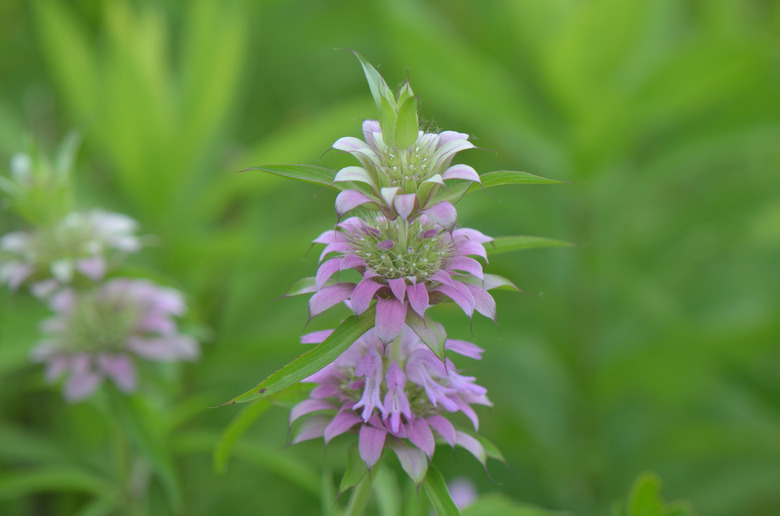Are Lemon Balm And Lemon Mint The Same?
We may receive a commission on purchases made from links.
While lemon balm (Melissa officinalis) and lemon mint (Monarda citriodora) are both members of the extensive mint family (Lamiaceae), they have distinct differences. Lemon mint is one of the many species in the bee balm genus (Monarda spp.) and lemon balm and its cultivars form their own genus (Melissa spp.). Additionally, they grow in different areas of the country. In the United States, lemon balm is a perennial (USDA plant hardiness zones 3 through 7), while lemon mint is an annual.
Tip
Lemon balm and lemon mint are different plants in the mint family. Both have a citrus scent, but they vary in their growth requirements and uses.
Lemon Balm Basics
Lemon Balm Basics
Lemon balm is a lemon-scented, sprawling herb that forms a clump up to 2 feet high and 3 feet wide, although it's often clipped with a pruning tool to a more compact form. Beginning early in the summer, its crinkly, ovate foliage emerges first, followed by spiky, pale-yellow flowers that last late into the summer. Cultivars of common lemon balm include golden-leaved, variegated and lime-scented types.
Gardeners often choose to plant this herb as it's well-known as a bee attractant and adds a pleasant fragrance to the garden. In the kitchen, home cooks use lemon balm in herbal teas, as a garnish for fruit salads or to add citrus flavor notes to seafood, poultry, cheesecake and other dishes that normally pair well with lemon.
Lemon Mint Basics
Lemon Mint Basics
One of the more compact members of the bee balm group, lemon mint seldom grows taller than 30 inches or broader than 24 inches. Its shaggy-headed, pastel purple or pink flowers appear from early to late summer.
Like lemon balm, lemon mint's narrow leaves produce the plant's distinctive citrus scent, which is most noticeable when you brush against the plant or crush its leaves. Gardeners often plant lemon mint in the sandier or rockier sections of a fragrance garden and in bee and butterfly gardens. Lemon mint is also ideal to use in herbal teas, salads and potpourri blends.
Similarities in the Plants
Similarities in the Plants
Like a botanical Venn diagram, lemon mint and lemon balm can flourish in some of the same conditions. Both herbs grow best in either full sun or partial shade, and both can take a bit of neglect.
Both lemon balm and lemon mint have the potential to become invasive. Lemon balm spreads by underground runners. Dig up the plant every few years and divide its roots, and keep its above-ground portions clipped back.
Keep lemon mint or lemon balm in a container if spreading runners are a concern. Because lemon mint sometimes self-seeds, be vigilant about pulling up its seedlings adjacent to your lemon mint patch or container.
Differences in the Plants
Differences in the Plants
Although lemon balm and lemon mint thrive in moderate climates, their full ranges of tolerance to both weather and soil differ. Lemon balm can withstand cold winters yet wilts in hot climates. In contrast, lemon mint typically dies in winter regions where it grows as an annual, yet sometimes returns through self-seeding or by underground runners, especially in mild climates. Although both herbs thrive in a range of soils, lemon balm prefers a neutral pH level of about 7.0 while lemon mint does best in chalky, lower-pH soil.
